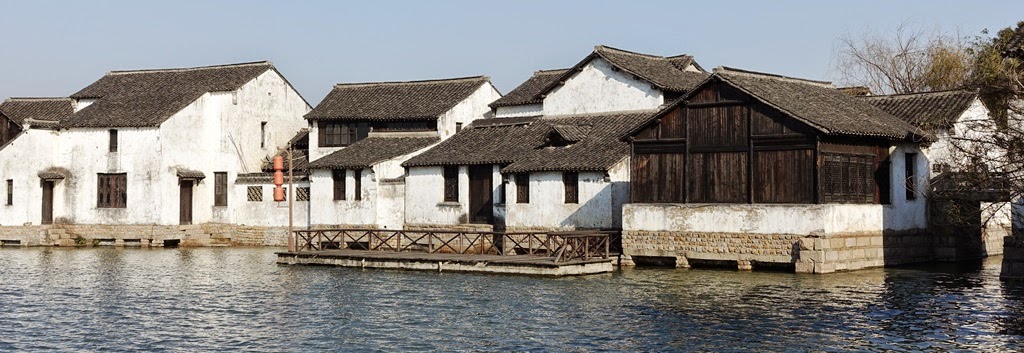Periodically, I'm asked to go on what are known as "outreach" visits to cities located in the provinces closest to Shànghăi 上海 - Ānhuī 安徽省, Jiāngsū 江苏省 and Zhèjiāng 浙江省. The idea is to establish a presence in localities that would normally be overlooked in the usual government-to-government exchanges and frequently involve visa presentations to business and/or student groups, courtesy calls with local officials and visits to American companies or Chinese firms with strong business ties to the United States. I've been on a couple of these trips already, and have just come back from my third such outing, an overnight visit to the city of Chángshú 常熟 in Jiangsu Province. It was a typical outreach foray in that I met with officials from the local Foreign Affairs Office, gave a presentation to a business group in one of the city's two development zones and was taken on a tour of two companies doing business in Changhsu. Hopefully, the trip was a success. With one exception, the photos below were taken during my free time there.
This is the exception. It's me looking as if I'm elaborating on the finer points of American foreign policy, in particular the strategic implications of the "pivot to Asia" as it pertains to China with a local official. In reality, we were just exchanging the usual pleasantries. The officials I met on this visit were all very friendly; in many of these outlying cities, they seem appreciative that someone from the U.S. mission, even a peon as lowly as me, has taken the time and effort to reach out to them. Many thanks go out to my coworker Charlie (on the left), who did so much to make this trip happen.
Changshu is considered a "small" city. It's an indication of just how big China is when an urban area with a population of one million registered residents (and another million or so unregistered denizens), and comprised of a dozen towns as well as two economic and technological development zones, is thought of as being in the minor leagues. Traditionally, textiles and garment-making were its largest industries, but in recent decades the automotive manufacturing sector has become dominant. Compared with many Chinese cities of similar size, Changshu seemed somewhat clean and well-organized, at least in the newer part of the city where I stayed. This was the view from my hotel room:
And this was the view from one of the corridors inside. The large apartment blocks in the background are gradually replacing the older housing seen in the front. The numerous condo complexes visible as I was driven around Changshu gave the city a Pyongyang-like appearance at times.
Dusk...
...and dawn:
After breakfast and with some spare time before the first item on the day's agenda, I took a walk in the park located across the street from the hotel. It was below-freezing, but the sky was clear, which doesn't happen all that often in China.
Close-up views of the above scenes:
Examples of older houses:
Locals:
Like public parks the world over, ghastly art set the scene in Changshu:
Outside the hotel...
...and in the lobby:
On this very chilly Wednesday afternoon, only a few tourists were out braving the cold:
The local firewater, Osmanthus wine 桂花酒, has an alcohol content of 78%. I was able to finish the small cupful I had by taking small sips. The woman who served it to me finished hers in one gulp. Sorry, America.
At Suzhou Railway Station 苏州站, en route to Shanghai:































No comments:
Post a Comment